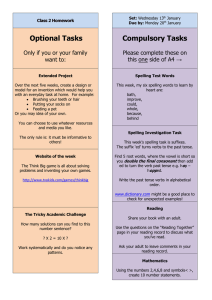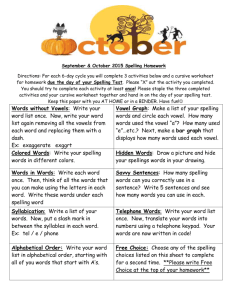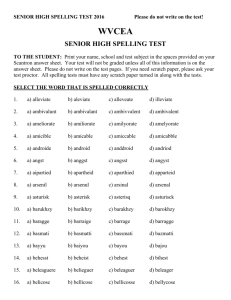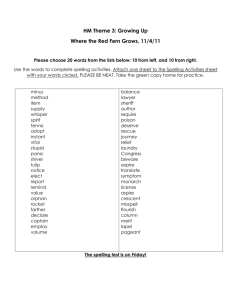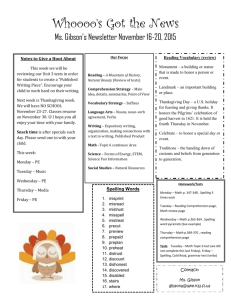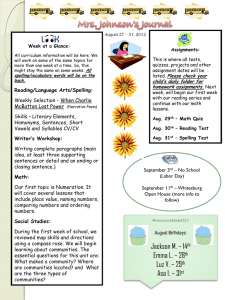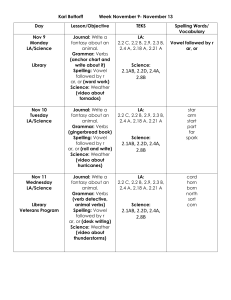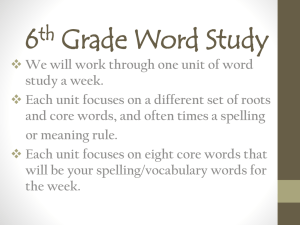Teaching Spelling
advertisement
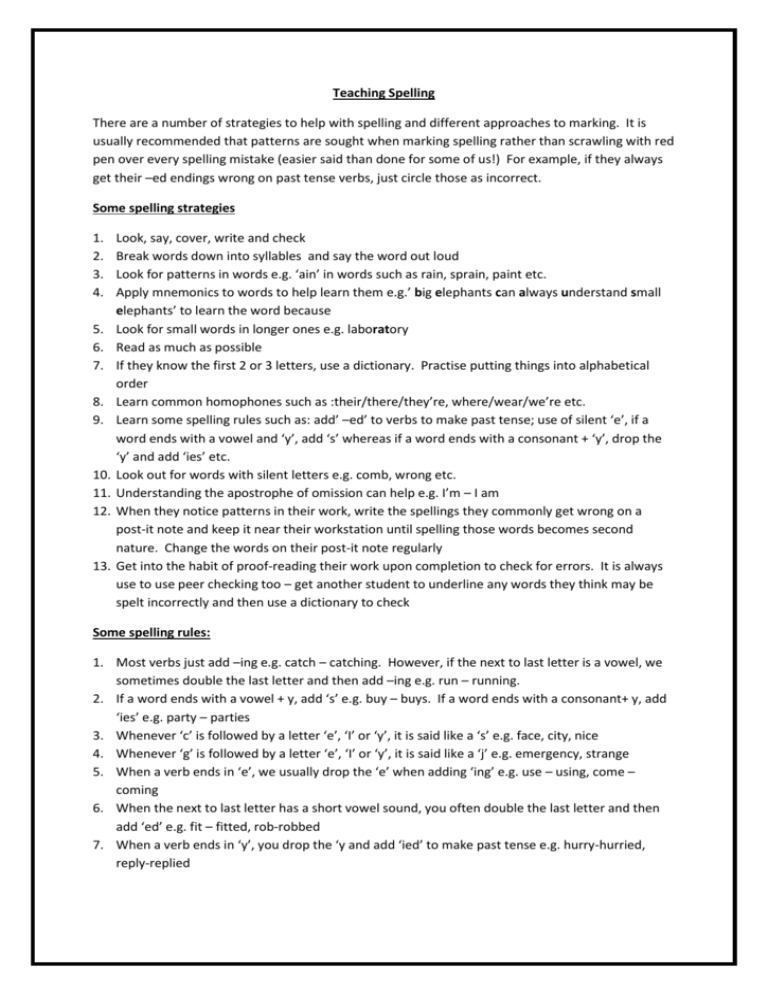
Teaching Spelling There are a number of strategies to help with spelling and different approaches to marking. It is usually recommended that patterns are sought when marking spelling rather than scrawling with red pen over every spelling mistake (easier said than done for some of us!) For example, if they always get their –ed endings wrong on past tense verbs, just circle those as incorrect. Some spelling strategies 1. 2. 3. 4. 5. 6. 7. 8. 9. 10. 11. 12. 13. Look, say, cover, write and check Break words down into syllables and say the word out loud Look for patterns in words e.g. ‘ain’ in words such as rain, sprain, paint etc. Apply mnemonics to words to help learn them e.g.’ big elephants can always understand small elephants’ to learn the word because Look for small words in longer ones e.g. laboratory Read as much as possible If they know the first 2 or 3 letters, use a dictionary. Practise putting things into alphabetical order Learn common homophones such as :their/there/they’re, where/wear/we’re etc. Learn some spelling rules such as: add’ –ed’ to verbs to make past tense; use of silent ‘e’, if a word ends with a vowel and ‘y’, add ‘s’ whereas if a word ends with a consonant + ‘y’, drop the ‘y’ and add ‘ies’ etc. Look out for words with silent letters e.g. comb, wrong etc. Understanding the apostrophe of omission can help e.g. I’m – I am When they notice patterns in their work, write the spellings they commonly get wrong on a post-it note and keep it near their workstation until spelling those words becomes second nature. Change the words on their post-it note regularly Get into the habit of proof-reading their work upon completion to check for errors. It is always use to use peer checking too – get another student to underline any words they think may be spelt incorrectly and then use a dictionary to check Some spelling rules: 1. Most verbs just add –ing e.g. catch – catching. However, if the next to last letter is a vowel, we sometimes double the last letter and then add –ing e.g. run – running. 2. If a word ends with a vowel + y, add ‘s’ e.g. buy – buys. If a word ends with a consonant+ y, add ‘ies’ e.g. party – parties 3. Whenever ‘c’ is followed by a letter ‘e’, ‘I’ or ‘y’, it is said like a ‘s’ e.g. face, city, nice 4. Whenever ‘g’ is followed by a letter ‘e’, ‘I’ or ‘y’, it is said like a ‘j’ e.g. emergency, strange 5. When a verb ends in ‘e’, we usually drop the ‘e’ when adding ‘ing’ e.g. use – using, come – coming 6. When the next to last letter has a short vowel sound, you often double the last letter and then add ‘ed’ e.g. fit – fitted, rob-robbed 7. When a verb ends in ‘y’, you drop the ‘y and add ‘ied’ to make past tense e.g. hurry-hurried, reply-replied



